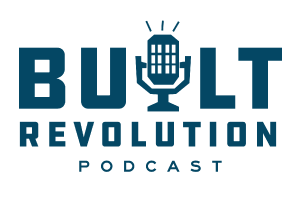In the third episode of Continuum Advisory Group’s Lean and Integrated Project Delivery (IPD) Miniseries…
How Lean Construction Principles Create Efficiencies and Cost Savings
The construction business is not always one for subtlety.
When you’re building something huge – say a factory – brute force can seem like an effective way to power through the complexities of workforce coordination, materials management and other hurdles. And sometimes it works… but at a cost.
A big one, as it turns out. In fact, researchers have estimated that anywhere from 25 to 50 percent of construction resources are wasted on each project. Those resources range from tangible materials to abstracts like labor and morale.
Lean construction philosophy is focused on closing that gap. It challenges the notion that speed and quality are disparate ideas. It is the belief that you can reduce waste and increase productivity, safety performance and project value through advance planning, strategic thinking, proactive management, communication and artful leadership.
How Does It Work?
Traditional Lean production is rooted in a few key ideals, the first being waste reduction. Waste comes from missed gaps in a chain. That can manifest in workers waiting around, excess materials, excessive handling of materials, underutilized talent, defects, and more. Essentially, all of these problems can be boiled down to someone not knowing exactly how or what they’re supposed to do.
In Lean construction, every worker is considered indispensable: if they fail, the entire chain fails. As a result, Lean construction requires clearly delineated responsibilities. Those responsibilities require long-term, strategic planning.
Most people are aware that the Toyota Company was one of the pioneers of Lean production. Early lean construction theorists took the Toyota Production System and re-purposed it focusing on efficient transformation of inputs to outputs, smooth flow of resources and maximizing the creation of value for the end customer.
There are several “tools” used in lean construction today including: the “Last Planner” system, BIM, Virtual Reality, 4D modeling, partnering sessions, team charters, certified facilitators and more.
How Can It Help?
To put the effects in perspective, GM tried lean production once in their experimental “NUMMI” plant. The facility produced record quality for GM, with as few defects per 100 cars as Toyota’s best facilities. A This American Life episode documents its happy employees, improved morale and cost savings.
While car production is obviously different, the same benefits apply to construction. Highly trained employees with clear responsibilities will feel valued, and work better, faster and safer. Managers who have clear instructions and deadlines will order materials on time and build things to spec. Teams with a clear vision of what needs to be accomplished, an understanding of roles and responsibilities, a focus on timelines, and effective communication systems will deliver high quality/high value projects to the end client.
For your company, this translates to an improved bottom line. The sooner your new facility is up and running, the sooner it can produce high quality product. The sooner product gets to market, the sooner profits are generated.
How Do You Implement It?
Lean is a mindset. Everyone on a project, from Leadership to Project Managers to Trade Partners, must buy in and accept this mindset in order for Lean to be successful. This is often the most challenging part of implementing Lean practices, as the decision to commit to Lean brings changes in the way we operate. Change is never easy, even the type of change that reaps significant benefits. It is not enough for Leadership to distribute a memo stating the decision to transition to Lean practices, followed by a 10-step process with various deadlines. For Lean to be successful, it must become second nature. It must drive discretionary actions. It must become the culture.
Creating a Lean culture starts with leadership. The Executive Team should take every opportunity to reinforce the importance of Lean, highlighting its benefits to not only the organization, but to each employee as well. One of the beauties of Lean is that it not only generates time and cost savings for the company, but it also makes every employee’s daily routine more efficient. Your people are happier. For it to truly become the culture, emphasize the benefits to your people first.
Your people are on board. Next, identify Lean Champions within your organization. These are the individuals responsible for executing Leadership’s vision of Lean. They are typically Project Managers at each site who ensure that Lean is continuously emphasized and its practices are always followed. They establish metrics that measure Lean activity and they ensure that all site workers are aligned and accountable to these metrics. They are the “boots on the ground”, and they are critical to any level of sustained success.
Next, implement a reward system. Create a friendly competition between sites that rewards the team with most Lean practices implemented, or most dollars or time saved. Consider team-building activities as rewards, such as off-site events or group dinners. These will reinforce the strong culture that Lean has already established.
Finally, listen. Listen to your trade partners. Learn their abilities, workflows and methods. Make sure they are aligned with the Lean strategy, and reassure them that they are as critical to the strategy as everyone else. Listen to your employees. Allow them the opportunity to suggest their own Lean practices. This creates a sense of ownership and accountability. Toyota regularly takes suggestions from their line workers on how to speed things up or assemble products more effectively. When you’re finished listening, how you respond and what actions you take based on the feedback received is very important. Remember, effective communication is the essence of lean production.
Reinforce. Reward. Listen. Respond. These are the ongoing actions that create a sustainable, successful Lean culture. Commit yourself to the mindset of Lean, and enjoy the benefits.

